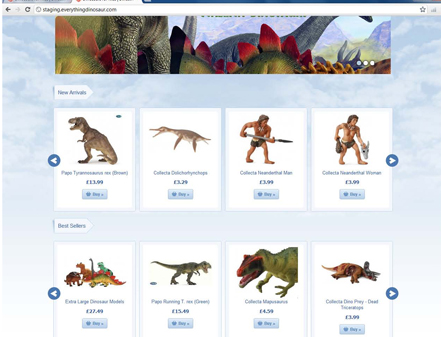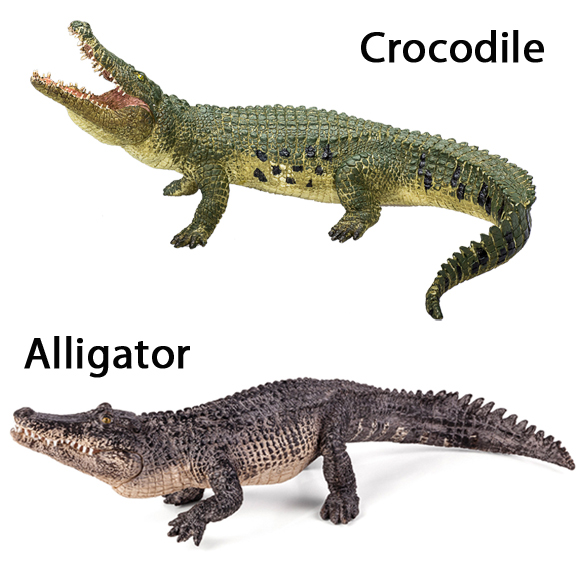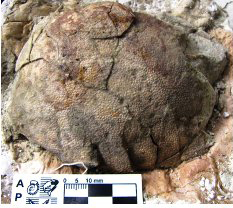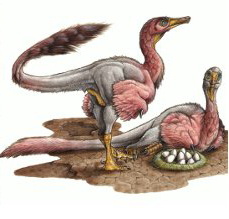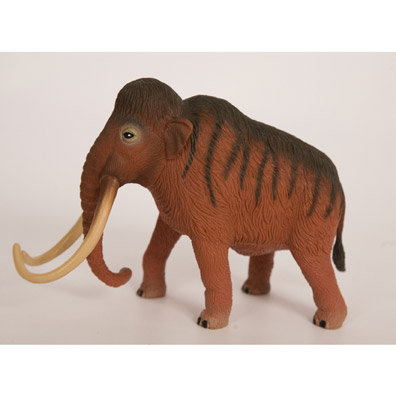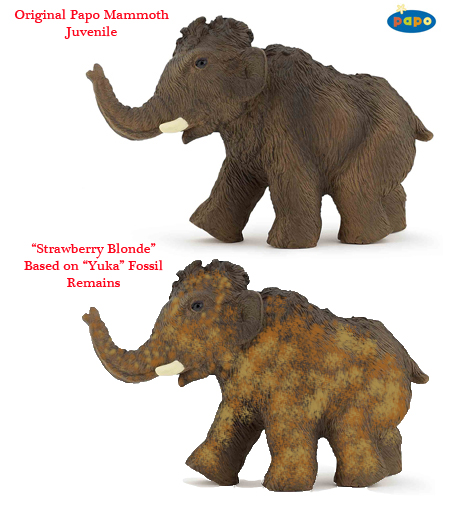Meet your Tyrannosaur Feathered Friend – Yutyrannus
Palaeontologists from the Institute of Vertebrate Palaeontology and Palaeoanthropology (Beijing, China) have published a scientific paper on a newly described feathered dinosaur. Over recent years, there have been many discoveries of new types of feathered dinosaur fossils in the Liaoning Province of northern China. However, this new dinosaur find, named Yutyrannus huali stands out for a number of reasons. Firstly, the specimens are very well-preserved and nearly complete, secondly, different sized individuals have been found, an adult and two juveniles, helping scientists to determine how these animals grew and developed and thirdly – Y. huali was huge. At something like nine metres in length and weighing over a tonne (estimated 1,400 kilogrammes), this dinosaur is one of the largest feathered creatures known to science. As if this wasn’t enough to get dinosaur fans swishing their tails and roaring with excitement it seems that this new feathered giant may have been a primitive member of the Tyrannosauroidea, that famous clade of theropods that include Albertosaurus, Daspletosaurus and of course T. rex.
Yutyrannus huali
A number of websites have reported on this discovery, some have claimed that this new species is the largest feathered creature known to science. True, when compared to the likes of the therizinosaur Beipiaosaurus (Beipiaosaurus inexpectus), a feathered dinosaur also from the Liaoning Province, it is very big. Beipiaosaurus is estimated to have measured around 2.5 metres in length and weighed as much as eighty kilogrammes, but commentators are forgetting the enormous, oviraptorid – Gigantorapotor erlianensis, discovered in 2005 by an expedition to Mongolia by scientists from the Beijing based institute. Indeed, some of the team that studied the eight-metre-long Gigantoraptor have also been working on this new giant feathered dinosaur. Gigantoraptor is estimated to have been taller than a giraffe.
To read more about the discovery of the oviraptorid Gigantoraptor: New Chinese Dinosaur Discovery – Gigantoraptor.
Analysis of the skull material suggests that Yutyrannnus was a member of the tyrannosaur family, a tyrannosauroid, although it is not a direct ancestor of the famous Tyrannosaurus rex, it was carnivorous and most probably an apex predator in its environment. The name Yutyrannus huali means “beautiful feathered tyrant”, in recognition of the evidence of long, filamentous feathers that have been found in association with the fossil remains and the classification of this new dinosaur species as a tyrannosaur.
An Artist’s Impression of a Flock of Yutyrannus on the Prowl
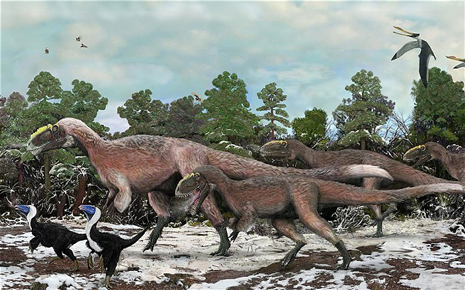
Giant theropod withfFeathers from Liaoning Province.
Picture credit: Brian Choo
Yutyrannus huali roamed what was to become northern China approximately 125 million years ago (Barremian faunal stage of the Early Cretaceous). The tyrannosaur family and its direct ancestors can be traced back into the Late Jurassic, Xu Xing one of the Chinese palaeontologists involved in the study of Yutyrannus was responsible for naming and describing Guanlong (Guanlong wucaii), a basal member of the tyrannosaurs that lived something like thirty million years earlier.
The adult skeleton measures about nine metres in length and indicates that this new dinosaur would have rivalled Gigantoraptor for the title of the biggest feathered creature known to science. The other two individuals are believed to represent immature individuals and not a second species. This has been determined by the Chinese researchers who noticed that a number of vertebrae (back bones) had not fully fused indicating that these fossils represent creatures that had not reached adulthood. Even so, these youngsters were already hefty. Each one would have weighed almost as much as a fully grown dairy cow.
Three Fossil Specimens
All three fossil specimens show evidence that these dinosaurs had feather-like filaments adorning their bodies. Some of the feathers were at least fifteen centimetres in length. In the adult, traces of feathers have been found along the tail, with the immature animals, the feathers appeared to have been along the neck and down the humerus (upper arm) in one specimen and near the pelvis and foot in the other. Taken together it can be speculated that a single Yutyrannus may have been entirely feathered. Certainly, younger animals may have been completely feathered, the feathers helping to insulate this warm-blooded dinosaur. Older animals, with larger bodies, which can retain heat better (surface area to volume assessments), may not have been completely feathered. It is possible that as the animals grew the feathers become important not for insulation against the chilly conditions in northern China but for display or to show status in the “flock”.
This new discovery, reported in the academic journal “Nature”, suggests what a number of palaeontologists have thought for sometime, that even the biggest theropods could have been feathered. Certainly, due to the size of these individuals these dinosaurs could not fly, but the feathers served another purpose – signalling amongst other members of the species or perhaps to insulate the animal against the cold.
One of the Skulls of this new Tyrannosaur (Yutyrannus huali)
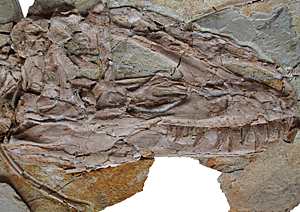
Basal tyrannosaur – Yutyrannus.
Picture credit: Zang Hailong
The picture shows a close up the skull of Yutyrannus, the teeth can be clearly seen. This dinosaur may have had a thin crest running from the tip of the snout to the back of the skull. What purpose this crest may have served is unknown.
Commenting on the Chinese research, Richard Prum, an evolutionary ornithologist at Yale University (USA) stated:
“The new finding shows for the first time that even giant theropods could be plumaged, and likely fully plumaged.”
The Chinese team are using microscopy and other techniques to try to determine the colours of the feathers, this may give the scientists more data on just what purpose the feathers served. Their discovery has re-ignited the debate whether other Cretaceous tyrannosaurs such as T. rex were feathered too.
Although, extensive coal deposits found in the Northern Hemisphere (Canada and Siberia), which date from the Early Cretaceous suggest that the climate was warmer than today, the high latitude with which these fossils are associated with indicates that the environment in which these giant theropods roamed could be decidedly chilly. Analysis of oxygen isotope ratios recovered from the teeth of Yutyrannus suggests that the climate in this part of China was remarkably similar to northern China today. It has been estimated that the average annual temperature was around ten degrees Celsius – much colder than in other parts of the world where dinosaur remains have been discovered. This finding adds weight to the speculation that the feathers helped to keep these creatures warm, insulating their bodies against the cold.
Irrespective of the feather’s function, the research team have concluded that Yutyrannus shows that a drastic reduction in plumage was not an inevitable consequence of having a large body size.
Thomas Holtz Junior, a vertebrate palaeontologist specialising in the Dinosauria, based at the University of Maryland (USA), commented on the new discovery. He stated that this new fossil find was:
“Another good example of evolution being a predictive science.”
The Liaoning Province had provided a lot of evidence of small, feathered dinosaurs, so many scientists had suggested that it was only a matter of time before evidence of a big dinosaur with feathers would be found.
Yutyrannus huali provides direct evidence that large, feathered dinosaurs did exist. It offers new insights into the origins and evolution of feathers, which are in themselves highly modified reptilian scales. The fact that two juveniles have been discovered permits scientists to examine how these animals changed as they grew (helping with ontogenic studies). Described as a basal tyrannosauroid, Yutyrannus is similar to other primitive tyrannosaurs found in northern China, although unlike the later T. rex it had three fingers on its hands, and the arms were proportionately much bigger than the arms of later tyrannosaurs.
This discovery represents one of the most significant finds from the Lower Cretaceous Yixian Formation of Liaoning Province.
For models and replicas of Yutyranus huali and other theropod dinosaurs: PNSO Dinosaur Replicas.


